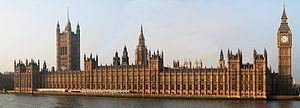Cycle to Work Scheme
The Cycle to Work scheme is aimed to encourage the purchase of bicycles and electric bikes in order primarily to promote good health and also to reduce engine emissions. The government provides tax and National Insurance breaks to reduce the cost to the buyer.
Cyclescheme are highly recommended implementers of the CTW scheme. We have worked with Cyclescheme very successfully for a number of years.
Cyclescheme can supply details of the Cycle to Work scheme, or alternatively, email us at Atman using the link below and we will send you details
|
Please send me details of
the Cycle to Work scheme |
What is the Employee Cycle to Work Scheme?

In order to encourage healthier lifestyles and to help reduce environmental pollution the UK Government has introduced Cycle to Work Schemes. In addition to the health and environmental benefits of these Schemes, the Schemes also provide financial help to both the employer and employees.
The following advice is to give a fair interpretation of the Governments cycle to work scheme. However, be aware, these guidelines change regularly [such as the ability to now add child seats on electric cycles and final values changing under new Inland Revenue guidelines] and Atman cannot change the pages frequently enough so Atman take no responsibility for inaccurate or out of date statements.
The key points of the Cycle to Work Scheme are:
- The employer buys the bicycle and safety accessories selected by the employee.
- Most employers can reclaim the VAT on the bike and accessories purchased.
- Most employers can claim capital allowances on the bike and accessories.
- The employer loans the bike to the employee for an agreed period. This hire period is normally 12 to 18 months. The employee pays hire charges to the employer through a salary sacrifice arrangement for the duration of the hire period.
- As a result of the salary sacrifice arrangement the employer saves the Employers NIC (generally 12.8%) of the salary being sacrificed.
- The Cycle to Work scheme is only available in the UK.
- At the end of the hire period the employer can sell the bike and accessories to the employee for a pre determined amount [set by the Inland Revenue]. Alternatively the employer can retain ownership of the bike and accessories and allow the employee to use the bike and accessories with no salary sacrifice.
Who can take advantage of the Cycle to Work Scheme?
The scheme is open to all employers. Employees must satisfy for following criteria:
- They must be on their employers payroll and pay tax through PAYE.
- Their contract of employment cannot be shorter than the hire period.
- They must be over 18 years old.
- Their salary cannot fall below the national minimum wage following the salary sacrifice.
- They should have completed any probationary periods.
- The scheme must be made available to all employees. It cannot be restricted to certain employees such as senior management.
What does the employer need to do?
The employer is responsible for managing the scheme in order to ensure that all Cycle to Work criteria are met in order to achieve the PAYE and NIC savings available.
The employer needs to be involved in setting up the scheme, ensuring payroll deductions are made during the period of the scheme and then transferring the bike and safety accessories to the employee once they have been paid for.
Atman of Sandwich will provide assistance in setting up the scheme. We have prepared proforma legal documents which the employer can use to enter into an agreement with an employee to recover the cost of purchasing the bike and safety accessories through a salary sacrifice arrangement. These agreements will also make the necessary amendments to staff contracts to deal with the salary sacrifice arrangements. We also give employers the option to pay for the bike and cycle accessories online using a company credit card or to pay by cheque.
The only ongoing administrative requirement is to ensure salary sacrifice deductions are made from the employees salary. This deduction is a fixed amount for a fixed period. Accordingly the ongoing administration requirement is minimal.
At the end of the salary sacrifice arrangement, once the bike and cycle accessories have been paid for, the employer will need to raise a VAT invoice to the employee for the fair market value of the bike and accessories in order to transfer legal ownership.
As the bike is company property during the period of the salary sacrifice agreement, and although the employee is responsible for insuring and maintaining the bike, we also recommend that the employer notifies its insurers of the Cycle to Work arrangement.
How do the savings work?
Savings are available as a result of Government initiatives to encourage healthier lifestyles and to help reduce environmental pollution. Cycling to Work is a key part of this initiative.
As a result an employer can provide a bike and related safety accessories to an employee for commuting purposes free of tax (PAYE) and NIC.
The employer can recover the cost of purchasing the bike and safety accessories from the employee by hiring the goods to the employee. The employee pays the hire charges through a salary sacrifice arrangement which results in a PAYE and NIC saving for the employee. Depending on the employers VAT status, the employer can also recover the VAT.
The employer also saves money as there is no Employers NIC to pay on the amount of salary sacrificed by the employee.
What is salary sacrifice?
A salary sacrifice is an arrangement between an employee and employer where an employee receives a lower salary for an agreed period in return for receiving a non-cash benefit from their employer. The non-cash benefit is the supply of the bike and the related safety accessories.
The total salary sacrifice for the Cycle to Work scheme is the cost of the bike and related safety accessories. The total salary sacrifice is apportioned equally over the period the employer hires the goods to the employee. For example if the total value of the bike and safety accessories is £600 and a salary sacrifice period of 12 months is agreed, the employees gross salary will reduce by £50 per month for the 12 months.
As the employee has a lower gross salary, say £50 per month as per the above example, the employees PAYE and NIC liability reduces. Therefore the true cost to the employee is not £50 per month but £50 less the PAYE and NIC saving.
How long will the salary sacrifice period last?
The salary sacrifice period is at the discretion of the employer and is usually between 12 and 18 months.
The length of the salary sacrifice period should not affect the overall cost to the employee. For example a bike and related safety accessories costing £600 should result in a £50 monthly salary sacrifice over 12 months or £33.33 per month over 18 months.
If a salary sacrifice arrangement is in place for more than 18 months then the employee has the right to cancel the arrangement as soon as the 18 month period has elapsed.
How does salary sacrifice affect an employees other benefit entitlements?
As a salary sacrifice arrangement reduces an employees gross salary there may be a knock on effect on other benefits. Although the effect on other benefits is likely to be small the employer should communicate any affects on other benefits to the employee. A salary sacrifice arrangement can potentially impact the following:
- Pension contributions based on gross earnings;
- Pension received if an employee is close to retirement and has a final salary pension arrangement;
- Entitlement to contribution based benefits like the state pension;
- Entitlement to earnings related benefits like Maternity Allowance;
- Entitlement to work related payments like Statutory Sick Pay.
How much can I save?
Savings for both the employee and employer vary. The savings are dependent on an employees personal status, whether the employer is VAT registered and if the employer wishes to pass all the available benefits to the employee or retain some of the benefit to offset against any costs for administering the scheme.
For example, if an employer chooses to pass the VAT recovered to the employee and the employee is a higher rate tax payer, the employee saves approx 50% on the normal Atman of Sandwich price. The employer will also make a saving on the employers NIC on the value of the salary sacrifice.
How much can I spend?
The value of the bike and safety accessories to be made available to the employee is at the discretion of the employer.
There is no formal limit on the value of the bike and safety accessories that can be provided and it is possible for an employee to have two bikes if an employee needs a bike at either end of a train journey between home and work.
However, despite there being no formal limit, most employers are limiting the value of bike and safety accessories made available to each employee to £1,000. This is because the OFT have issued a Group Consumer Credit Licence for employers adopting the Cycle to Work scheme up to a value £1,000. This means that if the value of the goods is under £1,000 the employer does not need to apply for a Consumer Credit Licence for the scheme. If the value of the goods exceeds £1,000 the employer will need to apply for a separate Consumer Credit Licence.
If an employer restricts the value of the bike and safety accessories to £1,000 but the employee wishes to spend more than £1,000 then the employee will need to pay the excess. The employee will not receive PAYE or NIC relief for the excess paid.
You can buy any bike and cycle safety equipment.
Safety equipment is not defined in legislation but the Department of Transport have indicted that it can include the following:
- Cycle helmets
- Bells and bulb horns
- Lights including dynamo packs
- Mirrors and mudguards
- Cycle clips and dress guards
- Panniers, luggage carriers and straps to allow luggage to be safely carried
- Atman and chains to secure the bike
- Pumps, puncture repair kits, cycle tools and tyre sealant to allow for minor repairs
- Reflective clothing
- White front reflectors and spoke reflectors
As the above list is not defined in legislation and has been prepared by the Department of Transport, employers may wish to confirm with their local tax inspector that they agree with the guidance given.
Where will the bike be delivered?
Due to security measures, bikes purchased online are sent to the card-holders address.
Who pays for and owns the bike and related safety accessories?
The employer must pay for the bike and related safety accessories and these goods remain the property of the employer until the hire period finishes. At the end of the hire period the employer may choose to sell the employee the bike at a fair market value.
Will the bike ever belong to the employee?
In order to take advantage of the tax breaks available for buying a bike and safety accessories for commuting purposes the employer will need to buy and own the bike and safety accessories and hire them to the employee for a fixed period.
At the end of that hire period the employer has the option to sell the bike to the employee at market value which HMRC have issued new guidelines on. An agreement cannot be made between the employer and employee to transfer ownership of the bike until the hire period is over as this would invalidate the scheme and the tax savings would be lost.
How is fair market value calculated when ownership of the bike is transferred to the employee?
The Inland Revenue have issued new guidelines on the final value, also, Cycle to work have also offered users the option to continue monthly payment sacrifices to reduce the final amount.
Does the employee need to use the bike to cycle to work?
The employee must mainly* use the bike and safety equipment for "qualifying journeys". A qualifying journey means a journey, or part of a journey, between an employees home and workplace or between one workplace and another.
As cycling only part of a journey is required, cycling to and from the station to get a train to work would qualify an employee for the scheme.
If the bike and safety accessories provided under the scheme are not mainly* used for qualifying journeys then the employee may lose the benefit of the PAYE and NIC savings available through the scheme.
(* mainly means more than 50% of the time using the bike and safety equipment must involve a qualifying journey.)
Who is responsible for insuring the bike?
The employee is responsible for insuring the bike. Cover can normally be obtained through home insurance or via the link on the Atman of Sandwich home page. The insurers should be advised that the employer has an interest in the bike.
If the bike is stolen whilst uninsured the employee will continue to be liable for any outstanding hire payments through the salary sacrifice arrangement.
Who is responsible for maintaining the bike?
The employee is responsible for maintaining the bike.
What happens if the employee takes unpaid leave?
If the employee takes unpaid leave, including maternity and paternity leave, the employer will normally extend the salary sacrifice period for the number of unpaid months. This extension to the period of the salary sacrifice arrangement is normally capped at 6 months.
What happens if the employee leaves his job before he has finished paying for the bike and accessories?
The payment for the bike and safety accessories by the employee is formalised through a Hire Agreement regulated by the Consumer Credit Act. This is a non-cancelable legal agreement. The hire charges under the agreement are made through a salary sacrifice arrangement.
If the employee leaves his employment through any reason during the salary sacrifice period then the employer will normally require the employee to pay compensation. The compensation is generally the employers costs which have not been offset due to the non-completion of the salary sacrifice arrangement.
This compensation payment will be taken from the employees final net pay and will not qualify for the PAYE and NIC savings normally available.
This compensation payment may be viewed as a termination fee and should cover the fair market value of the goods in order to transfer their legal ownership from the employer to the employee.
Do we need to advise any Government authority, including the Inland Revenue?
There in no requirement to notify any authority and prior approval is not required. However once the Cycle to Work scheme has been established an employer may wish to check with their tax office that PAYE and NIC does not need to be accounted for any salary sacrificed.



